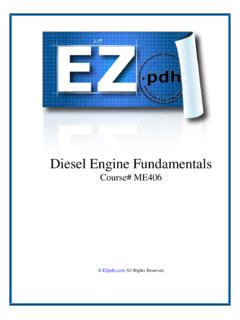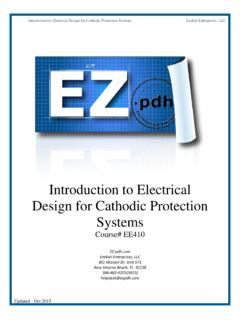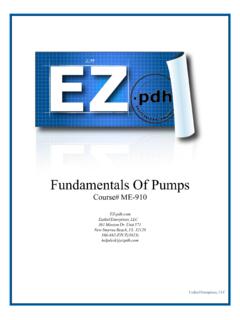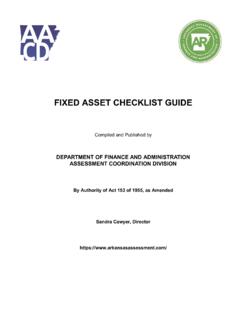Transcription of Fundamentals of Gas Turbine Engines
1 Fundamentals of Gas Turbine Engines Course# ME925 Ezekiel Enterprises, LLC 301 Mission Dr. Unit 571 New Smyrna Beach, FL 32128 386-882-EZCE(3923) Ezekiel Enterprises, LLC NONRESIDENT TRAINING COURSEGas Turbine Systems Technician (Electrical) 3/Gas Turbine Systems Technician (Mechanical) 3, Volume 2 NAVEDTRA 14114 DISTRIBUTION STATEMENT A: Approved for public release; distribution is 1 GAS Turbine engine FUNDAMENTALSThis chapter will help you understand thehistory and development of gas Turbine Engines (GTEs). It will help you become familiar with thebasic concepts used by GTE designers, followdiscussions of how the Brayton cycle describes thethermodynamic processes in a GTE, and learnhow various conditions and design limitationsaffect GTE performance.
2 How a GTE developsand uses hot gases under pressure is alsothoroughly discussed in this chapter. After readingthis chapter, you should have the basic knowledgeto be able to describe the principal componentsof GTEs and their construction, the GTE auxiliarysystems, and also be familiar with the nomen-clature related to GTEs and GTE technology. Amore in-depth coverage of the individual systemsand components for the General Electric LM2500 GTE will be discussed in chapter 2 of thisTRAMAN. To refresh your memory about thedifferent laws and principles discussed in thischapter, refer to NAVEDTRA 10563, volume 1,chapter reaction principle (Newton s third law) existedin early history.
3 However, practical applicationof the reaction principle. occurred only delay is due to the slow progress of technicalachievement in engineering, fuels, and metallurgy(the science of metals).Hero, a scientist in Alexandria, Egypt, wholived between the first and third centuries ,described what is considered to be the first jetengine (the aeolipile). This device (fig. 1-1) ismentioned in sources dating back as far as , and many sources credit Hero as records several examples of otherscientists using the principle of expanding gasesto perform work. Among these were inventionsHISTORY AND BACKGROUNDU ntil recent years, GTE technology and jetengine technology have overlapped a great same people have worked in both fields, andthe same sciences have been applied to both typesof Engines .
4 In the past, the jet engine has beenused more as a part of aviation. The GTE hasbeen used for electric generation, ship propulsion,and even experimental automobile operational Turbine power plants use aderivative of an aircraft jet engine as a gasgenerator (GG). When used as such, the enginemust be modified by the addition of a powerturbine (PT) and reduction gearing to completethe nature, the squid was using jet propulsionlong before scientists thought of it. Examples ofFigure 1-1. Hero s 1-2. da Vinci s chimney 1-3. Branca s jet Leonardo da Vinci (around 1500 ) ( ) and Giovanni Branca (in 1629) (fig.)
5 1-3).In the 1680s Sir Isaac Newton described thelaws of motion (discussed in GSE3/GSM3,volume 1, chapter 4). All devices that use thetheory of jet propulsion are based on these s steam wagon is an example of the reac-tion principle (fig. 1-4).In 1791 John Barber, an Englishman, sub-mitted the first patent for a design that used thethermodynamic cycle of the modern GTE. Thisdesign was also suggested for jet patented application for the GTE as weknow it today was submitted in 1930 by anotherFigure 1-4. Newton s steam , Sir Frank Whittle. His patent wasfor a jet aircraft engine .
6 Whittle used his ownideas along with the contributions of otherscientists. After several failures, he came up witha working DevelopmentThe United States did not go into the GTEfield until 1941. General Electric was thenawarded a contract to build an American versionof the British-designed Whittle aircraft engine and airframe were both built in 1 first jet aircraft was flown in this country inOctober late 1941 Westinghouse Corporation wasawarded a contract to design and build the firstall-American GTE. Their engineers designedthe first axial-flow compressor and annularcombustion chamber.
7 Both of these ideas, withminor changes, are the basis for most modern gasturbines in use Gas Turbine EngineUsing a GTE to propel a ship goes back to1937 when a Pescara free piston gas engine wasused experimentally with a GTE. The free pistonengine, or gasifier (fig. 1-5), is a form of dieselengine. It uses air cushions instead of a crankshaftto return the pistons. It was an effective producerof pressurized gases. The German navy used it intheir submarines during World War II as an aircompressor. In 1953 the French placed in servicetwo small vessels powered by a free pistonengine/GTE combination. In 1957 the liberty shipWilliam Patterson went into service on atransatlantic run.
8 It had six free piston enginesdriving two 1-5. Free piston that time applications of the use of a rotarygasifier to drive a main propulsion Turbine wereused. The gasifier (used as a compressor) wasusually an aircraft jet engine or turboprop frontend. In 1947 the Motor Gun boat 2009 of theBritish navy used a 2500-hp GTE. In 1951 thetankerAuris,in an experimental application,replaced one of four diesel Engines with a1200-hp GTE. In 1956 the gas Turbine ship JohnSergeanthad a very efficient installation. It gavea fuel consumption rate of pounds perhp/hr. The efficiency was largely due to use ofa regenerator, which recovered heat from theexhaust the late 1950s the marine GTE wasbecoming widely used, mostly by Europeannavies.
9 All the applications used a dual mainpropulsion system, combining the gas turbineplant with another conventional form ofpropulsion machinery. The GTE was used forhigh-speed operation. The conventional plant wasused for cruising. The most common arrange-ments were the combined diesel and gas(CODAG) or the combined diesel or gas(CODOG) systems. Diesel Engines give goodcruising range and reliability, but they have adisadvantage when used in antisubmarine low-frequency sounds travel great distancesthrough water. This makes them easily detectedby passive sonar.
10 Steam turbines have beencombined to reduce low-frequency sound in thecombined steam and gas (COSAG) configurationlike those used on the British Countyclassdestroyers. The COSAG configuration requiresmore personnel to operate. Also they do not havethe long range of the diesel configuration that has been successfulis the combined gas or gas (COGOG), such asused on the British 42. These ships use the4,500-hp Tyne GTE for cruising and the RollsRoyce Olympus, a 28,000-hp engine , for high-speed Navy entered the marine gas turbinefield with the Ashevilleclass patrol ships have the CODOG configuration withtwo diesel Engines for cruising and a GeneralElectric LM1500 GTE for high-speed Navy has now designed and is buildingdestroyers, frigates, cruisers, hovercraft, andpatrol hydrofoils that are entirely propelled byGTEs.









![Immigration Act [No. 13 of 2002] - Gov](/cache/preview/6/e/d/b/9/5/c/5/thumb-6edb95c56c9582b8c07273cb47cbac19.jpg)







